Source:Google.com.pk
Graphite Pencil Drawings Biography
I was born in the center of Europe, a little Baltic state of Lithuania. I grew up at seaside, near our only port city of Klaipėda, finished school and studied there.
Last year I gained a bachelor's degree in recreation and tourism.
In my country it is said, that people who grew up at the seaside are different - more relaxed, unrestrained and very talented. My artistical talents are inherited from my parents and grandparents. My gradmother is a traditional artist, my father was a musician, so in 2005 I finished a piano class in a local music school with highest grades. But as a visual artist - I'm not a professional, I'm hobbyist. And drawing is something that naturally comes to me.
Caspar David Friedrich was born the sixth of ten children in Greifswald, Swedish Pomerania, on the Baltic Sea. He grew up under the strict Lutheran creed of his father Adolf Gottlieb, a prosperous candle-maker and soap boiler. Friedrich had an early familiarity with death: his mother, Sophie Dorothea Bechly, died in 1781 when Caspar David was just seven. At the age of thirteen, Caspar David witnessed his brother, Johann Christoffer, fall through the ice of a frozen lake and drown. Some accounts suggest that Johann Christoffer succumbed while trying to rescue Caspar David, who was also in danger on the ice. His sister Elisabeth died in 1782, while a second sister, Maria, succumbed to typhus in 1791.
Some of Friedrich's contemporaries attributed the melancholy in his art to these childhood events, yet it is as likely that Friedrich's personality was naturally so inclined. As an adult, the pale and withdrawn Friedrich reinforced the popular notion of the "taciturn man from the North". His letters, however, always contained humour and self-irony. In his autobiography, the natural philosopher Gotthilf Heinrich von Schubert wrote of Friedrich, "He was indeed a strange mixture of temperament, his moods ranging from the gravest seriousness to the gayest humour … But anyone who knew only this side of Friedrich's personality, namely his deep melancholic seriousness, only knew half the man. I have met few people who have such a gift for telling jokes and such a sense of fun as he did, providing that he was in the company of people he liked."
In 1790, Friedrich began to study art with Johann Gottfried Quistorp at the University of Greifswald, and literature and aesthetics with the Swedish professor Thomas Thorild. Thorild was interested in the contemporary English aesthetic, and taught Friedrich to distinguish between the spiritual 'inner eye' and the less favourable physical 'outer eye'. Friedrich entered the prestigious Academy of Copenhagen in 1794 where he studied under teachers such as Christian August Lorentzen and the landscape painter Jens Juel. These artists were inspired by the Sturm und Drang movement, and represented a midpoint between the dramatic intensity and expressive manner of the budding Romantic aesthetic and the by then waining neo-classical form. Mood was paramount, and influence was drawn from such sources as the Icelandic legend of Edda and Ossian, and Nordic folklore. A talented student, Friedrich began his education at the academy by making copies of casts from antique sculptures, before proceeding to drawing from life. He was keenly interested in seventeenth-century Dutch landscape painting, to which he had access at Copenhagen's Royal Picture Gallery.
In 1798 he settled permanently in Dresden. He often drew works, mainly naturalistic and topographical, with India ink, watercolor and sepia ink. It is unclear when he finally took up oil painting, but it was probably after the age of thirty. Landscapes were his preferred subject, inspired by frequent trips, beginning in 1801, to the Baltic coast, Bohemia, the Riesen Mountains and the Harz Mountains. Mostly based on the landscapes of northern Germany, his paintings depict woods, hills, harbors, morning mists and other light effects based on a close observation of nature. The paintings of this time were modeled on sketches and studies of scenic spots, like the cliffs on Rügen, and the surroundings of Dresden or Elbe. The studies themselves were made almost exclusively in pencil, and provided topographical information; the subtle atmospheric effects characteristic of Friedrich's maturity were rendered from memory. These effects would eventually be most concerned with the depiction of light, of the illumination of sun and moon on clouds and water, optical phenomena specific to the Baltic coast and that had never before been painted.

 Graphite Pencil Drawings
Graphite Pencil Drawings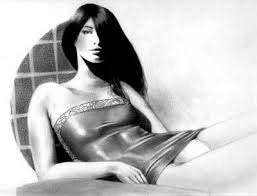
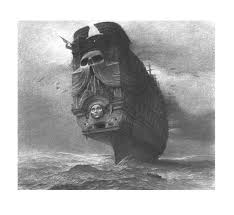
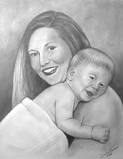
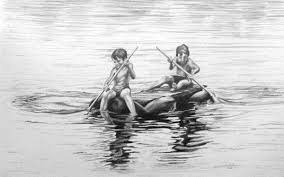

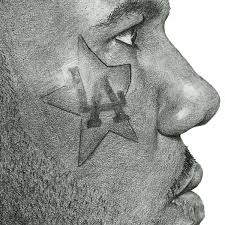
Graphite Pencil Drawings Biography
I was born in the center of Europe, a little Baltic state of Lithuania. I grew up at seaside, near our only port city of Klaipėda, finished school and studied there.
Last year I gained a bachelor's degree in recreation and tourism.
In my country it is said, that people who grew up at the seaside are different - more relaxed, unrestrained and very talented. My artistical talents are inherited from my parents and grandparents. My gradmother is a traditional artist, my father was a musician, so in 2005 I finished a piano class in a local music school with highest grades. But as a visual artist - I'm not a professional, I'm hobbyist. And drawing is something that naturally comes to me.
Caspar David Friedrich was born the sixth of ten children in Greifswald, Swedish Pomerania, on the Baltic Sea. He grew up under the strict Lutheran creed of his father Adolf Gottlieb, a prosperous candle-maker and soap boiler. Friedrich had an early familiarity with death: his mother, Sophie Dorothea Bechly, died in 1781 when Caspar David was just seven. At the age of thirteen, Caspar David witnessed his brother, Johann Christoffer, fall through the ice of a frozen lake and drown. Some accounts suggest that Johann Christoffer succumbed while trying to rescue Caspar David, who was also in danger on the ice. His sister Elisabeth died in 1782, while a second sister, Maria, succumbed to typhus in 1791.
Some of Friedrich's contemporaries attributed the melancholy in his art to these childhood events, yet it is as likely that Friedrich's personality was naturally so inclined. As an adult, the pale and withdrawn Friedrich reinforced the popular notion of the "taciturn man from the North". His letters, however, always contained humour and self-irony. In his autobiography, the natural philosopher Gotthilf Heinrich von Schubert wrote of Friedrich, "He was indeed a strange mixture of temperament, his moods ranging from the gravest seriousness to the gayest humour … But anyone who knew only this side of Friedrich's personality, namely his deep melancholic seriousness, only knew half the man. I have met few people who have such a gift for telling jokes and such a sense of fun as he did, providing that he was in the company of people he liked."
In 1790, Friedrich began to study art with Johann Gottfried Quistorp at the University of Greifswald, and literature and aesthetics with the Swedish professor Thomas Thorild. Thorild was interested in the contemporary English aesthetic, and taught Friedrich to distinguish between the spiritual 'inner eye' and the less favourable physical 'outer eye'. Friedrich entered the prestigious Academy of Copenhagen in 1794 where he studied under teachers such as Christian August Lorentzen and the landscape painter Jens Juel. These artists were inspired by the Sturm und Drang movement, and represented a midpoint between the dramatic intensity and expressive manner of the budding Romantic aesthetic and the by then waining neo-classical form. Mood was paramount, and influence was drawn from such sources as the Icelandic legend of Edda and Ossian, and Nordic folklore. A talented student, Friedrich began his education at the academy by making copies of casts from antique sculptures, before proceeding to drawing from life. He was keenly interested in seventeenth-century Dutch landscape painting, to which he had access at Copenhagen's Royal Picture Gallery.
In 1798 he settled permanently in Dresden. He often drew works, mainly naturalistic and topographical, with India ink, watercolor and sepia ink. It is unclear when he finally took up oil painting, but it was probably after the age of thirty. Landscapes were his preferred subject, inspired by frequent trips, beginning in 1801, to the Baltic coast, Bohemia, the Riesen Mountains and the Harz Mountains. Mostly based on the landscapes of northern Germany, his paintings depict woods, hills, harbors, morning mists and other light effects based on a close observation of nature. The paintings of this time were modeled on sketches and studies of scenic spots, like the cliffs on Rügen, and the surroundings of Dresden or Elbe. The studies themselves were made almost exclusively in pencil, and provided topographical information; the subtle atmospheric effects characteristic of Friedrich's maturity were rendered from memory. These effects would eventually be most concerned with the depiction of light, of the illumination of sun and moon on clouds and water, optical phenomena specific to the Baltic coast and that had never before been painted.
Graphite Pencil Drawings
Graphite Pencil Drawings
Graphite Pencil Drawings
Graphite Pencil Drawings
Graphite Pencil Drawings
Graphite Pencil Drawings
Graphite Pencil Drawings
Graphite Pencil Drawings
Graphite Or Pencil Drawing Techniques
Im YoonA - Graphite Pencil Drawing
No comments:
Post a Comment